
Mindful Breathing 101: Four Deep Breathing Exercises for Stress & Anxiety Relief
Deep breathing is a great tool to promote relaxation and stress management. This post breaks down the science and benefits of deep breathing, and it

Deep breathing is a great tool to promote relaxation and stress management. This post breaks down the science and benefits of deep breathing, and it

Looking for a new activity to try? In this post, I share a comprehensive list of physical activities for anyone looking to increase their daily

When we think of our health, what often comes to mind is our physical health, such as nutrition and exercise. However, there are 8 dimensions
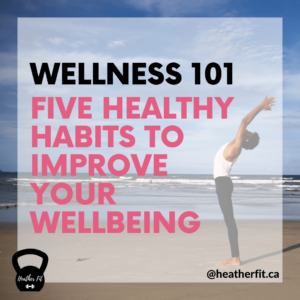
We’ve had a crazy past year, and now more than ever we are beginning to realize the importance of taking care of our health and

Welcome to the Heather Fit Blog! If you couldn’t already tell by my blog’s name, my name is Heather and I am the Fitness Instructor,
Deep breathing is a great tool to promote relaxation and stress management. This post breaks down the science and benefits of deep breathing, and it shows you 4 different deep breathing exercises.
When we experience stress and anxiety, our body responds by activating the stress response. This response causes our sympathetic nervous system to be activated, which signals our bodies to release various hormones in response to a threat. For example, imagine you went for a walk and saw a bear. Your body would automatically activate the stress response causing your heart rate and blood pressure to increase, your eyes to dilate, and your blood to be directed to our arms and legs. Additionally, your body would release cortisol and adrenaline to give you the energy you need to get away from the bear.
On the flip side, when we are calm, our parasympathetic nervous system is activated. This system “switches off” the stress response and puts us into a calm state. In this calm state, our breathing is slowed, our blood pressure and heart rate are low, our eyes are normal and our energy is shifted to resting and digesting the foods we eat.
It’s important to note that our stress response is not only activated by a direct threat such as a dangerous situation. The stress response can be triggered by anything we perceive as being stressful. This can include perceived threats (e.g., I have a test tomorrow), and even when we anticipate something might be threatening (e.g., I think this person is angry with me).
Stress is not always a bad thing, as it can motivate us to get things done, however, when stress is chronic and we are unable to manage it, it can cause issues such as burnout, anxiety, depression, and other health consequences. Learning how to calm ourselves down and manage the stress we experience is vital to living a balanced & healthy life. Fortunately, there are many stress management techniques out there, and it’s about finding the strategies that work best for you.
To promote calmness & relaxation, the goal is to activate our parasympathetic nervous system and “turn off” our sympathetic nervous system. AKA we want to turn OFF the system that causes stress (sympathetic), and turn ON the system that helps us relax (parasympathetic).
One way to activate the parasympathetic nervous system is to practice something called diaphragmatic breathing, or “deep breathing”. In this type of breathing, we deeply inhale and use our diaphragm to expand our belly, followed by slowly exhaling. By consciously slowing our breathing, it results in our heart rate to lower (this is because our heart rate and breathing are connected). Lowering our heart rate then causes a cascade of events which causes our blood pressure to lower, and our muscle tension to decrease. Deep breathing essentially reverses the stress response by using our breathing to activate our parasympathetic nervous system. Some ways to make deep breathing even more effective include lengthening the exhale so it is longer than the inhale.
There are many ways to practice mindful breathing, and it’s about finding the method that works best for you. Below are four deep breathing exercises you can try to help calm yourself down. Depending on which style is your preference, it is recommended you practice deep breathing often, so you can use it as a tool when you experience stressful situations.
 Start by finding a comfy spot to sit or lay down. Find a position that’s comfortable for you. Take note of how you feel before doing this exercise. Do you feel any tension in your body, if so, where? How deep/shallow is your breathing?
Start by finding a comfy spot to sit or lay down. Find a position that’s comfortable for you. Take note of how you feel before doing this exercise. Do you feel any tension in your body, if so, where? How deep/shallow is your breathing?
Once you finish the exercise, take note of how you feel. Do you feel the tension in your body has decreased? Do you feel a sense of calmness?
 Technique 2: Square Breathing/Equal Breathing Exercise
Technique 2: Square Breathing/Equal Breathing ExerciseSquare/Equal breathing is a breathing technique where the inhale is the same length as the exhale. This exercise also helps provide a visual cue for you to sync your breath. You follow the same steps as Technique 1, however, the breathing counts are slightly different:
 Alternate nostril breathing is a technique where you inhale through one nostril and exhale through the other. This exercise incorporates your hands and is often used in yoga practices.
Alternate nostril breathing is a technique where you inhale through one nostril and exhale through the other. This exercise incorporates your hands and is often used in yoga practices.
Guided meditations are a great way to alleviate anxiety and stress. You can practice guided meditations by sitting or lying down in a comfortable place. Additionally, listening to calming recordings can help give you something to focus on while you relax.
Try this guided meditation!
The amount of mindful breathing you “should” do, depends on what feels the best for you. Taking 5-10 minutes out of your day to practice mindful breathing is a great strategy to help with stress relief. The more you practice, particularly when you are not in a “stressed” state, it makes it easier to implement when you are stressed. Make mindful breathing a habit by setting aside some time in the morning to help you prepare for your day, or during your evening routine to help prepare you for bed.
I hope you found these deep breathing exercises helpful & relaxing! Mindful/deep breathing is something I’ve been trying to practice daily, and I have noticed it’s helped me feel calmer throughout the day. I’m curious… What’s your favourite way to practice mindful breathing? I love practicing slow yoga and ending my session with some basic belly breathing. It always helps me feel calm and ready to tackle my day! Let me know your favourite way to practice mindful breathing in the comments below.
Take care,
Heather
References:
 Looking for a new activity to try? In this post, I share a comprehensive list of physical activities for anyone looking to increase their daily activity.
Looking for a new activity to try? In this post, I share a comprehensive list of physical activities for anyone looking to increase their daily activity.
According to the CDC, “Regular physical activity is one of the most important things you can do for your health”, and this is because physical activity provides a vast number of health benefits. These benefits range from promoting strong muscles and bones to reducing your risk of depression and other chronic diseases including heart disease and diabetes.
When it comes to being physically active & unlocking health benefits, it is recommended to reduce sedentary time (AKA the time spent sitting or being stationary), and increasing the amount of movement you do throughout the day. More specifically, the key to unlocking the health benefits of physical activity is to move on a regular basis, and it is recommended to accumulate a total of 150 minutes of moderate-to-vigorous physical activity spread out throughout the week. To learn more about the movement guidelines, click here!
The Movement Guidelines:
It is recommended adults obtain 150 minutes of moderate to vigorous physical activity (MVPA) each week, in bouts of 10 minutes or more.
MVPA: Any activity that increases your heart rate and makes it difficult to carry out a conversation.
The first suggestion that comes to mind is to find an activity that you enjoy doing, as it is much easier to stick with something you enjoy. If you’re having trouble finding an activity to do, or you want to change up your physical activity routine, I’ve compiled this physical activities list totaling 100 ways to be physically active!
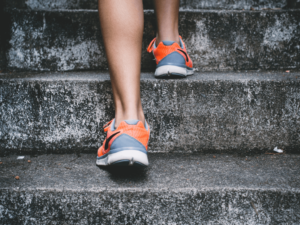 While on the Go:
While on the Go:
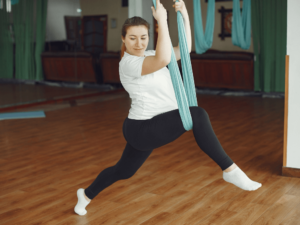 Try sightseeing (museum, walk around your local city)
Try sightseeing (museum, walk around your local city)—
Try a Fitness Class:
—
Hit up the gym:
 Obstacle course
Obstacle courseTry Yard Games:
Join a rec league/play a sport:
 Walking
WalkingTry Seasonal sports/activities:
Great! You have this long list of 100 ways to be physically active. So how exactly do you “move” forward & start being active? The next step is to do it! Spend some time this week trying out your chosen activities & take note of how they make you feel. For additional wellness tips, check out my latest blog post: Wellness 101: 5 Healthy Habits to Improve Your Wellbeing | Simple Self Care Tips & Wellness Strategies to Enhance Your Health in 2022 🌿
1. What activities sound interesting to you? Brainstorm a list of activities you would like to try.
2. Is there anyone you want to reach out to & try the activities with? Write down their names and reach out to them to gauge their interest in the activities.
3. Schedule them! Whether you choose to do the activities solo, or you want to bring a friend, pick a date/time to do the activities and schedule them.
4. Do them! When the scheduled time comes, do the activities & enjoy!
5. After doing the activities, reflect on how the activities made you feel. If you feel great, schedule them again. If you didn’t enjoy the experience, that’s okay! Repeat this activity and try something else!
I hope you enjoyed this article & found this physical activities list fun to try. I want to know… what activities are you going to try? Also, I’m wondering do you engage in any hobbies that should be added to this list? Let me know in the comments below!
Take care,
Heather
When we think of our health, what often comes to mind is our physical health, such as nutrition and exercise. However, there are 8 dimensions of wellness that contribute to our health and well-being besides the physical elements alone (1).
Wellness is a concept that looks at our health as an integration of our physical, mental and spiritual well-being (1). Specifically, wellness encompasses 8 interdependent domains, known as “The Dimensions of Wellness”. I like to call them, “The Roots of Wellness”. These dimensions all interact with each other and contribute to our overall health and well-being. In order to truly flourish, all dimensions of our wellness need our attention (1).
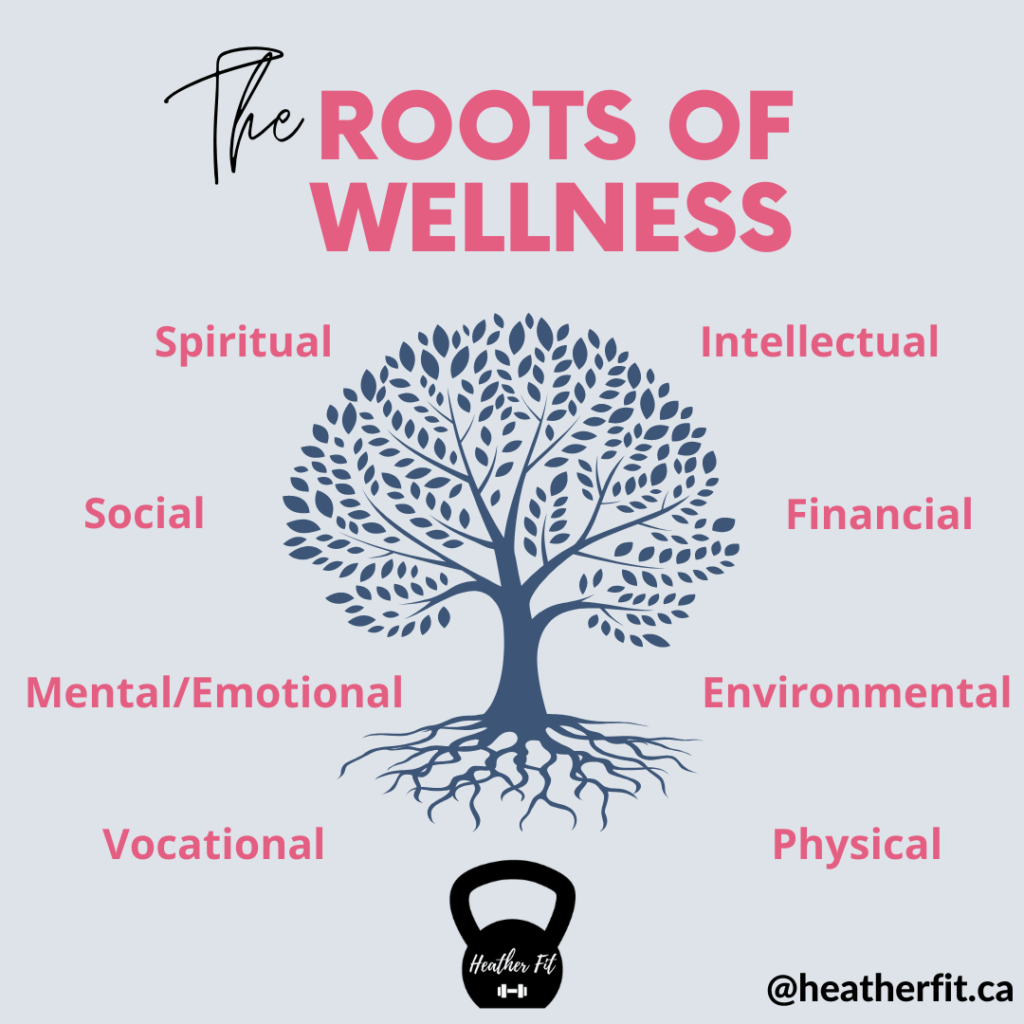
Flourishing is the product of the pursuit and engagement of an authentic life that brings inner joy and happiness through meeting goals, being connected with life passions, and relishing in accomplishments through the peaks and valleys of life.
Dr. Lynn Soots
Wellness is an active process where an individual practices healthy habits on a daily basis to attain better health outcomes. It’s about providing the appropriate amount of attention to all of the dimensions. However, the amount of attention required for each dimension will vary from person to person. The goal is to strive for a “personal harmony” that allows us to feel our best.
It’s important to note that not every aspect of our wellness is always under our control. This is because our wellness is significantly influenced by the physical, social and cultural environments in which we live.
Learn about the Eight Dimensions of Wellness below, as well as some strategies you can use to care for each dimension. In the comments at the end of the post, comment your favourite strategy you use you care for your wellness.
Want more ideas to care for your wellness? Check out my recent article, 5 Healthy Habits to Improve Your Wellbeing.

The physical dimension of wellness includes all of the behaviours that keep your body healthy (3). This can look like doing regular physical activity, eating a healthy diet, and getting enough rest/sleep. Other examples include managing stress, illness & chronic health conditions, avoiding harmful habits, and having self-care/hygiene (2, 3, 4).
Caring for our physical health also means we recognize and care for ourselves when we are not physically well, and understand how our behaviour influences optimum physical wellness (2).
Examples:
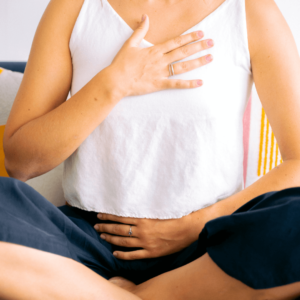
The emotional domain of wellness is about being able to recognize, accept, process, and take responsibility for your feelings. This includes being able to share both positive and negative feelings in appropriate and productive ways. It also includes recognizing, considering, and responding to the feelings of other people and animals (2).
Taking care of our emotional wellness allows us to build resiliency to work through life’s challenges, respond to stress, and overcome setbacks.
Examples:

The social dimension of wellness is having a sense of connectedness and belonging (6). It involves relating and connecting with other people and establishing/maintaining healthy relationships with others (5).
Caring for our social wellness can include getting involved in our community, spending time with other people, being genuine and authentic with others, and setting healthy boundaries (6). Having good social wellness allows us to initiate good communication with others, develop healthy relationships, and build better communities (5).
Examples:

The spiritual dimension of wellness provides meaning and direction to our lives through a guiding set of beliefs, faith, values, ethics, and/or moral principles (2). It involves establishing peace and harmony in our lives by helping us understand our values and purpose in life.
Spiritual wellness also includes developing characteristics such as compassion, forgiveness, altruism, optimism, and happiness. These characteristics can help us find hope, purpose, and meaning in our experiences (2, 6).
Practicing spiritual wellness can look like participating in self-reflection, meditation, prayer, or even spending time in nature (6).
Examples:
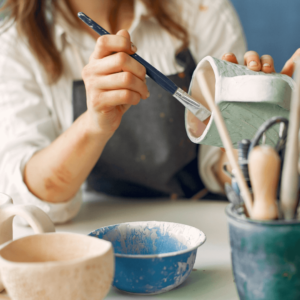
The intellectual domain of wellness includes recognizing our creative abilities, knowledge, and skills, and finding ways to utilize, expand, and share them with others (4). It also includes being able to recognize biases, helpful/unhelpful thinking, and managing inner dialogue and negative thoughts (2).
Ways to care for our intellectual wellness can include engaging in creative pursuits, exercising critical thinking skills, and participating in thoughtful discussions with others (3, 4).
This allows us to expand our knowledge and skills, participate in lifelong learning, and share these insights with others.
Examples:

The occupational/vocational dimension of wellness is the ability to balance life with a satisfying vocation that is consistent with our values, skills, goals, and lifestyle (1, 2). This can also include volunteering and engaging in hobbies/interests that provide fulfillment, meaning, and purpose.
Ways to care for our occupational/vocational wellness include maintaining a work-life balance and exploring opportunities that allow us to develop & share our passions, skills, and talents.
Taking care of our occupational wellness helps us feel a sense of purpose and contribution to our community.
Examples:

The financial dimension of wellness is about being able to meet your current and ongoing financial needs and feeling secure about your financial future. This includes balancing your needs and wants to achieve your financial goals. Additionally, it’s about engaging in behavour choices to ensure you have adequate income, savings, and investments for your needs (2).
Taking care of our financial wellness can help us manage household expenses, be prepared for times of financial uncertainty, be able to afford our wants/needs, and help secure our financial future. It can also give us the capacity to make contributions that support others (e.g., donating to a charity) (2).
Examples:

The environmental dimension of wellness includes having respect for nature and all species living on the planet, as well as occupying environments that support well-being (7, 8).
This includes practicing daily habits that promote a healthy environment such as reducing waste, conserving energy, using active transportation, and recycling. Additionally, having access to green spaces and clean drinking water, feeling safe in our communities, and occupying pleasant and stimulating environments have profound effects on our environmental well-being. Although we are not able to control all of our environments, we can take small steps within our control to promote positive and safe spaces.
Developing your environmental consciousness can help you become aware of how your habits influence the environment, as well as how the environment can influence your well-being.
Examples:
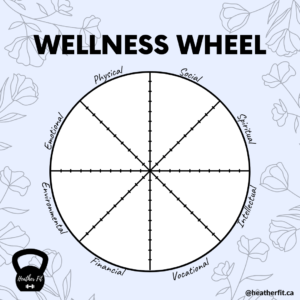 As mentioned earlier, wellness is about giving the appropriate amount of attention to each of the domains, and this amount will vary from person-to-person and depending on the context. What’s important is finding the right balance for yourself, where you are able to function at your best.
As mentioned earlier, wellness is about giving the appropriate amount of attention to each of the domains, and this amount will vary from person-to-person and depending on the context. What’s important is finding the right balance for yourself, where you are able to function at your best.
To help you determine which areas to focus on, a great tool is using a wellness wheel. A wellness wheel allows you to rate how you feel you are doing for each domain of wellness on a scale from 1 to 10 – a lower number indicating an area you feel needs nourishment and attention. You can also use your wellness wheel to brainstorm strategies to care for each domain.
Once you have determined the areas of wellness that need attention, focus in on only one or two healthy habits to implement. Remember, it’s not about doing everything all at once, but it’s about slowly incorporating healthier habits into our daily lives. To avoid overwhelm and set yourself up for greater success, start with only one or two habits. As these habits get easier, continue to add in new habits over time.
I hope you found this article helpful. If you want more tips & tricks, check out the related blog posts below, follow my Instagram & subscribe to my YouTube channel!
xoxo,
Heather
References:
 We’ve had a crazy past year, and now more than ever we are beginning to realize the importance of taking care of our health and wellness.
We’ve had a crazy past year, and now more than ever we are beginning to realize the importance of taking care of our health and wellness.
I’m not sure about all of you, but lately, I feel like I’ve been muddling through life and just surviving… I think with everything going on & the hardships we have endured throughout the pandemic, it’s important to take a step back & check in on ourselves.
That’s why today I want to talk all about wellness & equip you with some strategies and tools to help you take small steps to enhance your wellbeing.
I know “wellness” is a buzzword lately, but beneath its surface, it’s actually a very useful principle.
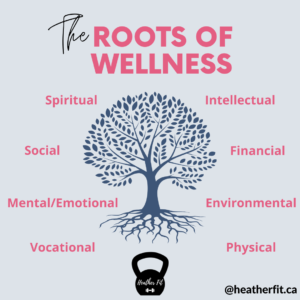 So what this means, is wellness is about taking small steps and actions to build a life where you live & feel your best.
So what this means, is wellness is about taking small steps and actions to build a life where you live & feel your best.
Additionally, Wellness takes a holistic view of your health. This means health and well-being are comprised of more than just your physical health. In addition to physical health, wellness includes emotional, spiritual, environmental, financial, social, intellectual, and occupational domains that all influence your health & well-being.
Another important concept about wellness is that it emphasizes balance in our lives, meaning that it promotes making sure we have time to do the things that make us feel happy and fulfilled. This includes working, having fun, spending time with family and friends, participating in the community, being physically active, praying, relaxing, and sleeping.
When it comes to wellness, there’s not a “one size fits all” it’s about finding the tools and strategies that work for you.
Below, I’m going to share some different tips to help you enhance your well-being. Take what tips resonate with you, and if you have any other wellness tips to share with others who are struggling, share them in the comments below!
 Although scientists still aren’t exactly sure why we sleep, this may shine a light on the importance of sleep, as we spend nearly 1/3 of our lives doing it! Our body’s natural tendencies to regulate sleep, similarly to eating, drinking, and breathing suggest that sleep serves a similar critical role in our health and wellbeing.
Although scientists still aren’t exactly sure why we sleep, this may shine a light on the importance of sleep, as we spend nearly 1/3 of our lives doing it! Our body’s natural tendencies to regulate sleep, similarly to eating, drinking, and breathing suggest that sleep serves a similar critical role in our health and wellbeing.
So learning about these benefits, you’re probably asking the question, “So how much sleep do I actually need?”
What helps you sleep? Let me know in the comments!
I know you’ve probably heard about mindfulness before & if you’re anything like me, you probably rolled your eyes because it doesn’t seem that sitting in one spot with your legs crossed will add many benefits to your life. However, over time I’ve actually come to realize that mindfulness doesn’t have to look like sitting in one spot in silence. Mindfulness is something you can adapt to meet your own needs & preferences and it actually can bring positive change to our well-being.
 It’s about letting go of the past because it’s already happened, and not worrying about the future because it’s unknown. It’s about taking control of your life, right here, right now & doing what you can in each moment to appreciate what you have and make the most of it.
It’s about letting go of the past because it’s already happened, and not worrying about the future because it’s unknown. It’s about taking control of your life, right here, right now & doing what you can in each moment to appreciate what you have and make the most of it.
My favourite quote is:
Mindfulness is about celebrating today and in practicing mindfulness, we get better at savoring the pleasures in life and coping with stress.
Check out my box breathing video for a breathing exercise & if you’re interested in learning more about mindfulness, check out my YouTube Channel!
 As a kinesiology graduate, I could talk about the benefits of physical activity for days. Here are a few of my favourite facts that highlight the importance of movement for our well-being:
As a kinesiology graduate, I could talk about the benefits of physical activity for days. Here are a few of my favourite facts that highlight the importance of movement for our well-being:
Use the outdoors to your advantage. Again, I could probably go into an entire video on this topic alone, but being in nature is beneficial to our wellbeing & when paired with exercise it can provide a powerful wellness combination for both our bodies and minds. Being outdoors can add further benefits to physical activity by helping to lower our stress hormones and improving our moods. I’m curious.. what’s your go-to nature spot in your city?
If you want to be active at home, I do have options for you on my YouTube Channel. My workouts are focused on being fun & you can check them out here!
You can’t talk about exercise without talking about nutrition. When it comes to our nutrition, the foods we eat are broken down by our bodies and used for fuel & the building blocks to become you! Eating a balanced diet can have numerous benefits for our health and wellbeing. This can span from influencing our mood to providing us fuel to sustain our bodies to get through our day.

Eat a balanced plate – I recommend looking at the resources from dietitians Canada about building a healthy plate. The Canada Food Guide has been recently updated & provides a very good general outline on healthy eating. Here’s what they recommend:
For more reading about nutrition, I’d recommend checking out unlockfood.ca to learn more about healthy eating.
 Humans are innately social creatures and being connected to others is an important aspect of our well-being. Heck, in prehistoric times, our survival depended on being included in a group!
Humans are innately social creatures and being connected to others is an important aspect of our well-being. Heck, in prehistoric times, our survival depended on being included in a group!
Today, we have the benefit (for the most part) of being able to choose our friends & who we surround ourselves with. Finding people you can trust can help provide support during hard times, and give us opportunities to experience new joys.
Five wellness tips and strategies you can use to help promote your health and wellbeing. Your next step is to come up with a Game Plan for integrating these strategies into your daily life.
I want to know… what your game plan is moving forward? What is the first step you are going to take to begin focusing on your wellness?
Let me know in the comments below & be sure to add in any other wellness tips that have helped you so far this year.
Take care!
Xoxo,
Heather
Welcome to the Heather Fit Blog!
If you couldn’t already tell by my blog’s name, my name is Heather and I am the Fitness Instructor, Blogger, and Creator of HeatherFit. I am currently living in Ontario, Canada with my loving sister & her adorable dogs Stella and Lola. I’ve always had a passion for fitness & wellness and have learned many tips & tricks for incorporating wellness into my busy lifestyle.
Apart from creating time-efficient workouts that you can find on my YouTube Channel here, I write a blog.
Over the years I have taught fitness for a living, delivered wellness programming to numerous audiences, and completed both my Master’s degree & Bachelor’s Degree in Kinesiology. Throughout my training & education, I have learned many tips, tricks, & strategies that I look forward to sharing with you.
My goal is to help you live a happy, healthy, and sustainable lifestyle while having fun doing so!
Are you ready to learn more about the importance of wellness & take steps towards living your best life? I’ve already begun creating valuable content on my blog, YouTube channel & Instagram page that you can check out. On the Heather Fit blog, I’ve created numerous resources you can access:
 Check out my Workout Library where you can filter all of the workouts from my YouTube channel, so you can easily find any type of workout you’re looking for. My workout library allows you to filter my workouts workout type, body area, equipment type, and more! My goal with this workout library is to make exercise accessible and save you time looking for the perfect workout.
Check out my Workout Library where you can filter all of the workouts from my YouTube channel, so you can easily find any type of workout you’re looking for. My workout library allows you to filter my workouts workout type, body area, equipment type, and more! My goal with this workout library is to make exercise accessible and save you time looking for the perfect workout.To get notified of my latest videos and posts make sure you subscribe to my YouTube channel and follow my Instagram page. On those platforms, you can expect to see weekly wellness content & notifications about upcoming blog posts.
Thank you for tuning into my very first blog post! I am so excited to share more Heather Fit wellness content with you!
Stay Tuned!
Xoxo,
Heather
Hi, I’m Heather & I love all things health & wellness.
I share fun workouts & wellness tips for anyone looking to level-up their health & wellbeing.
– Socials –
– Recent Posts –